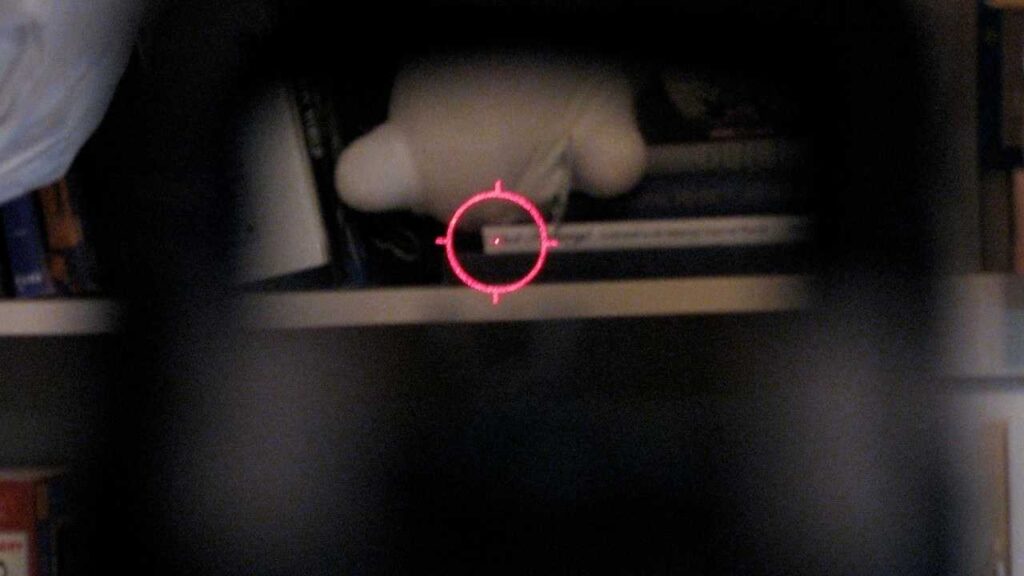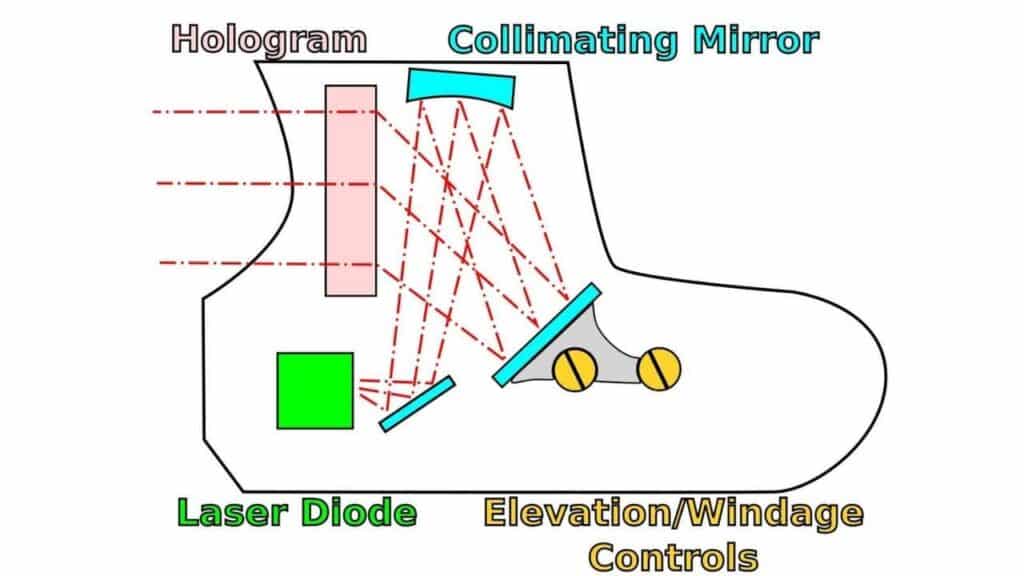
If you’ve ever found yourself intrigued by the high-tech wizardry of a holographic sight, you’re not alone. But have you ever wondered, “How does a holographic sight work?” Let’s delve into this world of sophisticated optics and uncover its fascinating secrets.
Welcome to an exploration where science meets practical application: the inner workings of a holographic sight. It’s an exciting, high-tech tool used by sharpshooters, law enforcement.
But the question remains – how does a holographic sight work?
Unveiling this technology might seem like decrypting a science fiction enigma, but we’re here to shed light on this intriguing subject.
Get ready to journey through light diffraction principles, understand the interplay of lasers and mirrors, and discover how this incredible gadget enhances accuracy in a variety of demanding scenarios.
By the end of this exploration, the complex mechanisms behind the holographic sight will no longer be a mystery.
Let’s gear up and start this riveting journey together!
Working of a Holographic Sight
The holographic sights are designed in a way that reconstructs the image of the reticle. The image which we see is not a real one but a reconstruction. This is how a holographic is different from other conventional scopes. This is the main principle on which the holographic sight works.
To understand the working of a holographic sight, we need to compare it with a camera. A camera that records a video is primarily red, but sometimes it can be green as well. Or captures an image of an object that reflects lights. These images and videos can be seen later. Similarly, in a holographic sight, the wave patterns shown are a reflected view of a target object.

However, a camera can only capture a two-dimensional image, while a holograph can capture a three-dimensional image. This increases the efficiency of the holographic sight as it helps to target the shooter easily.
During the manufacturing of a holographic weapon sight, a three-dimensional image is recorded on the holographic film. Then a laser diode is used to illuminate the image. The range of the sight is arranged by tilting the holographic grating.
A holographic grating is used to avoid changes in the wavelength of the laser that can occur due to temperature change. The grating disperses the light of the laser in a direction opposite to the hologram of the reticle.
A holographic sight is not parallax-free. Parallax comes into play when the shooter has to take long-range shots. What a shooter needs to have is that the reticle and target are aligned. This makes for a perfect shot.
The sight has a parallax error when these two are not aligned. This can be detected if the shooter moves his head a little and the reticle also moves from the target.
A holographic sight is not Parallax free, but its parallax error is minimal. This is one of the reasons that shooters prefer holographic sights.
The reticle of a holographic sight appears in the middle of an optical window made of glass.
Also, the reticle is a transmission hologram. In a transmission hologram, all the wavelengths of light are diffracted to have a rainbow appearance. It is different from a reflection hologram in which selected wavelengths are reconstructed.
The reticle in a holographic sight is illuminated and is a reconstructed image of the target. The size of the reticle is small, like a dot.
The holographic sights work on batteries. The sights consume a lot of energy, and hence a single set of batteries cannot be used for a long time. This happens because holographic sights make use of complicated technology for their work, which consumes more energy.
Hence, a holographic sight does not have a durable battery compared to other sights such as a red dot. This is one of the drawbacks of using a holographic sight.
Features of Holographic Sight
1. Holographic Sights Are Night Vision Compatible
This means that holographic sights are compatible with devices that provide night vision. It does not provide night vision but works with night vision providing devices such as intensifying image tubes. The night compatibility features include the following.
- The reticle can be adjusted to the level of light, which is so low that a naked eye cannot see.
- Works incompatibility with image intensifier tubes.
- Helps to better aim targets in the dark.
- Brightness levels of holographic weapon sights are adjustable in the daytime. There are 20 brightness settings for this purpose.
- When in the night vision mode, ten different settings help adjust the light differences.
The night vision devices and holographic sights are also mounted together. And besides the shooter, nobody can detect when the night vision mode is on. This avoids alarming the target during closed combats.
2. Holographic Sights Are Heavy-Duty In Design
Holographic sight weapons are known for their durability. They can withstand stress and are tested to survive in hostile situations. So much so that even if the screen of the sight gets damaged, the reticle remains on the target.
It is water-resistant, shock-resistant, and hence works in extreme weather conditions. All the units are designed in such a way that they do not rust. The optical sight is protected with a sturdy material to prevent damage in hostile situations.
3. The Heads-Up Display In a Holographic Sight Perform Various Functions
The two distinctive features of holographic sights are a reconstruction of the reticle image and the ability to shoot with both eyes open. Both these are made possible due to a heads-up display.
It records the date that is required for the reconstruction of an image of the reticle. Moreover, it also allows shooting with both eyes open, which maximizes the vision of the shooter.
4. Holographic Sights Have Built-In Computer Control System
The Built-In System Includes Following Functions
- Checks the battery power indicators.
- Manages the auto shut-down features.
- Brightness levels are adjusted.
5. Holographic Weapon Sights Have a Wide Range Field of View
The windows of the holographic weapon sights are wide and rectangular, and it also allows you to keep both eyes open while shooting. This gives the weapons a wide range of fields of view, which allows speedy target acquisition.
6. The Focus of The Holographic Weapon Sights Is Extremely Sharp
Holographic sight give a highly sharp view of the reticle and the target.
Due to the holographic reticle, the shooter can focus on the reticle as well as the target. For this reason, the shooter does not need to move back and forth or from the reticle to the target again to find focus. This is unlikely to happen in other sights, such as the red dot.
Frequently Asked Questions
Are Holographic sights Parallax free?
Holographic sights are not completely parallax-free, but when compared to other scopes, its parallax error is minimal.
Which batteries are used?
Standard batteries such as AA or CR123 are used in holographic sights.
What is the usage of Holographic sights?
Holographic sights are used in closed combats as it is best suited in situations where timely acquisition is required.
Are holographic sights water-resistant?
Yes, holographic sights are water-resistant. This is the reason that they are compatible in extreme weather conditions.
What is the accuracy of holographic sights?
Holographic weapons sights are compatible to be used for high accuracy within 300 yards.
